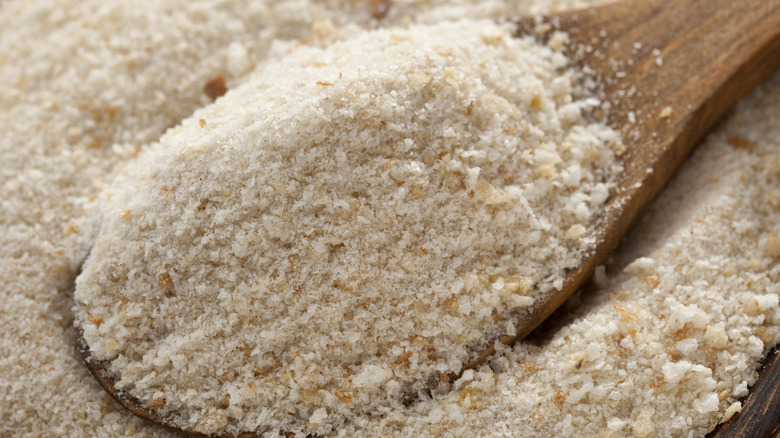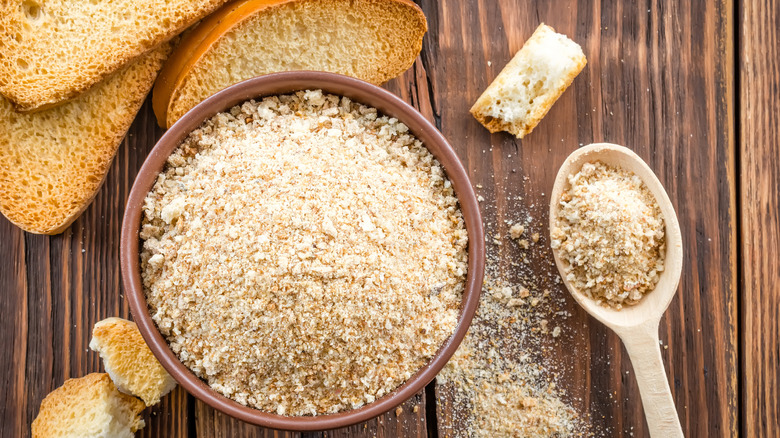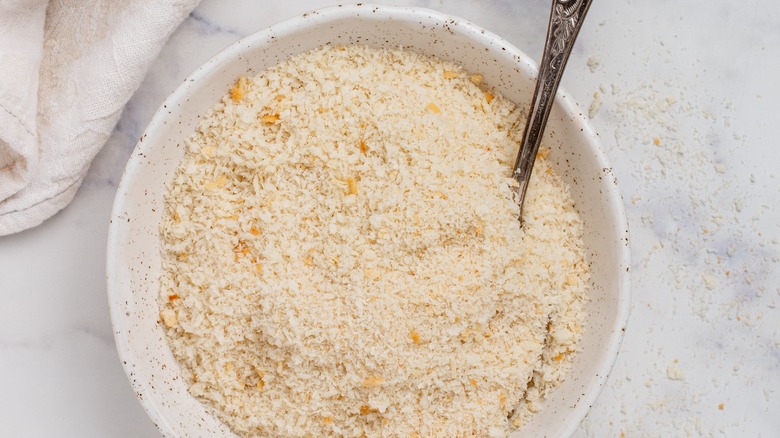Do Bread Crumbs Get Moldy?
Breadcrumbs are the definition of a versatile pantry staple. They're perfect for adding a crispy, golden layer to fried chicken cutlets or breaded pork chops, and work wonders for binding meatloaf, burgers, and meatballs together. With so many different ways to use breadcrumbs, from thickening light soups to lending a lip-smacking crunch to casseroles and pastas, it might seem like you can't go wrong with this ingredient — but it is, in fact, susceptible to spoilage.
If your trusty container of breadcrumbs has been sitting on your pantry shelf for a while, you may wonder if the crumbs can spoil and turn moldy, like their fresh counterparts. Breadcrumbs have a much longer shelf life than fresh bread, which is another reason why they're so useful, but they're not everlasting. How long they last depends on whether you choose to make breadcrumbs at home or buy them from the store. Homemade crumbs typically stay fresh for about a week, whereas store-bought varieties generally last upwards of six months.
If store-bought breadcrumbs are past their "best by" date, they may still be safe to use, but they might taste stale or "off." Homemade breadcrumbs are more likely to attract mold spores, while much drier store-bought breadcrumbs are far less susceptible, but not immune. It's not impossible for unappetizing spores to crop up in your container of panko or Italian breadcrumbs, especially if the crumbs come into contact with moisture.
Moisture can cause mold to grow
It's no secret that loaves of bread grow mold rather quickly. This is largely due to all of the moisture they contain in the form of milk, water, and fats like butter and oil. Moisture is one of two components that an environment must contain in order to grow mold spores, the other being oxygen. If this mold-producing duo is present, the spores can form on just about any organic substance, from paper products and wood to soil and food — and yes, that includes breadcrumbs.
As previously stated, fresh and soft breadcrumbs are more likely to develop mold because they're not as dried-out as industrially-produced products. Making your own crumbs is both economical and delicious, but they have such a short shelf life due to their freshness, and generally are not good to consume after a week. However, even fresh crumbs likely won't grow any icky mold, so long as you store them properly. Proper storage can be the difference between tossing out a bag of crumbs that are merely stale, versus having to contend with a container full of unsightly spores.
Store breadcrumbs in a cool, dry place
In addition to requiring oxygen and humidity, mold thrives in warmer temperatures. For this reason, storing your breadcrumbs in a cool, dry place is incredibly important. In order to keep fresh breadcrumbs from going bad virtually overnight, keeping them at room temperature in an airtight container is ideal.
Dry, store-bought breadcrumbs can be stored in much the same way as their fresh counterparts, in an airtight container somewhere cool and dry, such as your pantry or kitchen cupboard. And never touch your stash of breadcrumbs with wet hands or cooking utensils. Follow these guidelines, and not only will you avoid mold growth, but your crumbs will last longer before going stale.
You can extend the shorter shelf life of homemade breadcrumbs by sealing them in an airtight plastic bag and popping them in the freezer, which should help them last for about three to six months. Before placing them in your freezer, consider writing down the date on the bag, so you can keep track of how old they are. Similarly, you can also freeze store-bought crumbs, which will keep them good for about up to a year.



